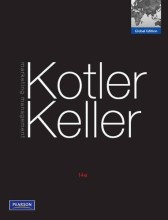Summary: Chapter 9 - Homeostasis And Behavior
- This + 400k other summaries
- A unique study and practice tool
- Never study anything twice again
- Get the grades you hope for
- 100% sure, 100% understanding
Read the summary and the most important questions on Chapter 9 - Homeostasis and behavior
-
1 -
This is a preview. There are 6 more flashcards available for chapter 1
Show more cards here -
What 2 types of thirst are there? Explain both.
- Osmotic thirst: when interstitial osmolality draws water out of the cells, thus inducing cellular dehydration. Especially when consuming salty or sugary foods.
- Alleviating osmotic thirst requires only the ingestion of water. - Hyopvolemic thirst: when blood plasma volume is reduced.
- Alleviating hypovolemic thirst requires water, but also sodium and other solutes.
- Osmotic thirst: when interstitial osmolality draws water out of the cells, thus inducing cellular dehydration. Especially when consuming salty or sugary foods.
-
What is the difference bewteen VP and ADH?
It's the same hormone, but with different functions.- ADH, referring to its effect on the kidneys.
- Vasopressin, referring to its effect on blood vessels.
-
What are the effects of angiotensin?
- Stimulates drinking behavior in rats
- Stimulates the release of aldosterone from the zona glumerolosa of the adrenal gland
-
What is the function of aldosterone?
- Aldosterone promotes rentention of sodium in the kidney by stimulating sodium pumping in the ascending limb of the loop of Hendle.
- This causes high sodium concentrations in the kidney, which causes water to be reabsorbed from the blood as it flows through the nephron. Thereby it reduces the amount of water excreted through urine.
- Aldosterone promotes rentention of sodium in the kidney by stimulating sodium pumping in the ascending limb of the loop of Hendle.
-
What are the adaptions of Australian rabbits to their sodium-rich or sodium-poor environments?
- Snowy mountain rabbits: excrete very little sodium in their urine. Seasonal changes.
- Desert rabbits: excrete consistently high levels of sodium and have low aldosterone levels.
-
Syrian hamsters will not drink salty water. How do you save Syrian hamsters in a low-sodium environment or adrenalectomized hamsters?
Mix the salty water with sugar so that it masks the taste of the salt. They will the dink it. -
2 -
This is a preview. There are 6 more flashcards available for chapter 2
Show more cards here -
Explain short term energy balance
- Requirement for energy is constant, while consumption of energy is episodic.
- When more food is consumed than required, the excess energy is stored as adipose tissue, or fat. This stored energy is later tapped when the steady delivery of metabolic fuel from the intestines declines after a meal.
- Requirement for energy is constant, while consumption of energy is episodic.
-
Explain long term energy balance
Animals have homeostatic systems that function to keep body mass within a relatively fixed range over weeks, months, or even years. -
What 2 phases of energy usage are there after a meal (well-fed state)?
- The postprandial phase. Occurs immediately after the ingestion of food.
- A supply of metabolic fuels, in the form of sugars (glucose), fatty acids and amino acids enter the bloodstream (energy surplus).
- Excess energy is stored.
- Insulin acts to promote uptake of glucose and lowers the levels of metabolic fuels in the blood. - The postabsorptive phase.
- Insulin secretion rises, glucagon secretion falls.
- In the liver, amino acids are converted into ketone bodies
Other hormones that play a role are epinephrine, norepinephrine, somatostatin and glucagon. - The postprandial phase. Occurs immediately after the ingestion of food.
-
What are the most common mechanisms for raising blood sugar levels without eating?
- Glucagon release
- Gluconeogenesis
- Sympathetic stimulation of fat break down.
- Higher grades + faster learning
- Never study anything twice
- 100% sure, 100% understanding
































